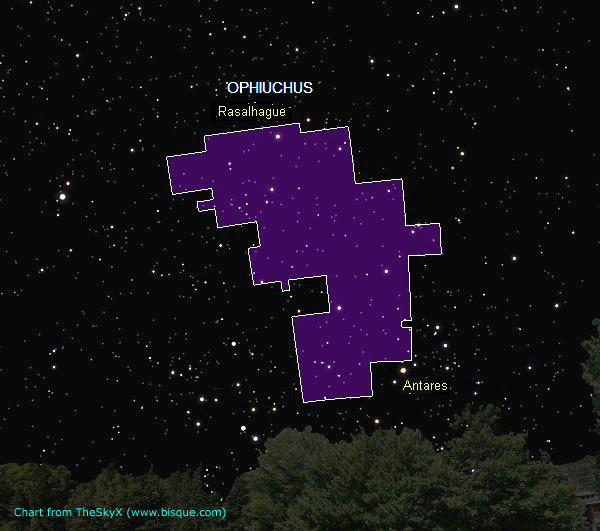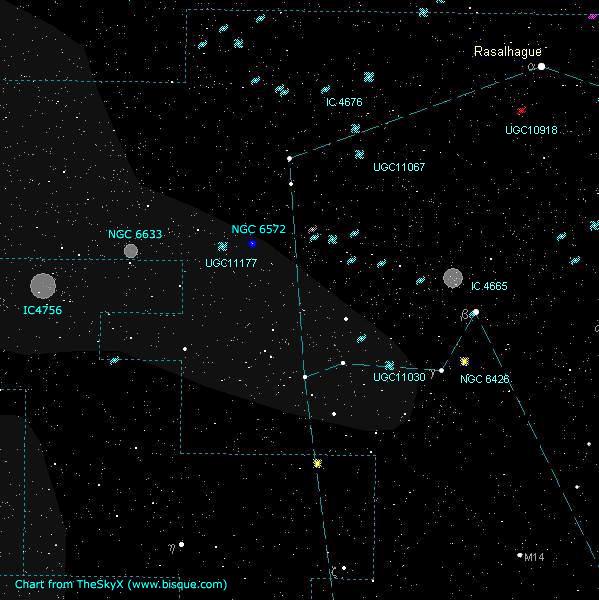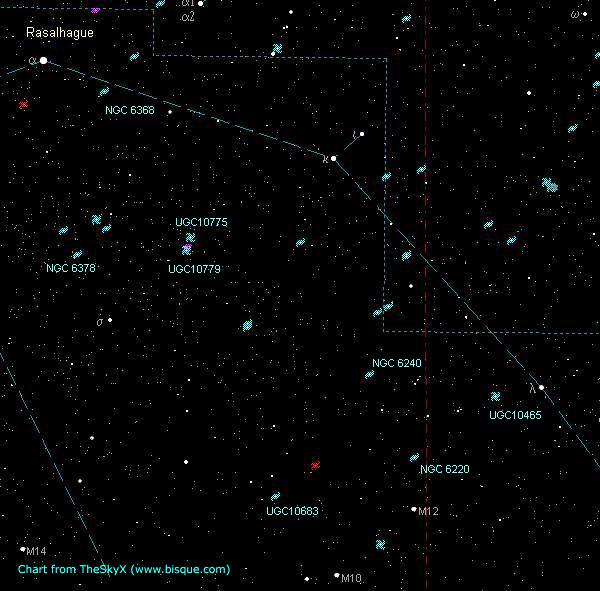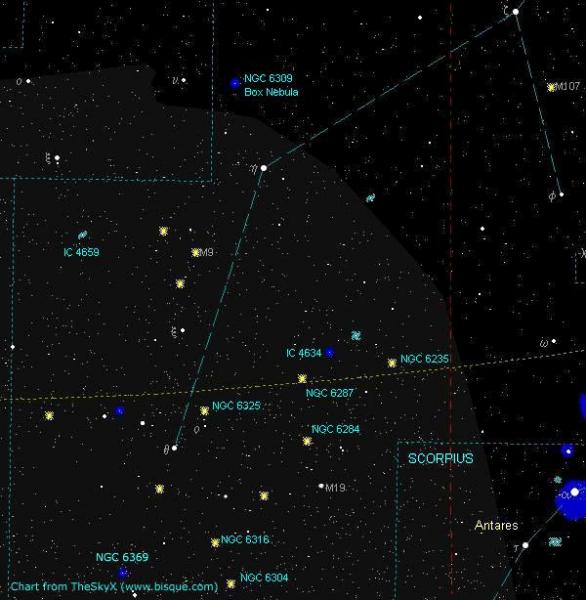Ophiuchus – The Mystery Constellation
The world of astrology and those who follow its daily predictions were dealt a crushing blow in the second week of 2011. Overnight, the dates of the signs were revamped and a mysterious thirteenth house was added. People woke up to find out they were no longer who they thought they were. For instance, if someone went to bed a Capricorn, they woke up as a Sagittarius, etc. Personally, it was about time these dates changed because of the 26,000-year wobble called precession. The Sun now appears in the constellation to the left from where your sign used to be. As for this mysterious pattern thrown into the mix – there is no mystery.
For those of us that follow the night sky, Ophiuchus – The Serpent Bearer is simply a large pattern of stars centred between Hercules to its north along with Sagittarius and Scorpius to its south. At 948 square degrees, Ophiuchus is listed eleventh largest in area and with 24 globular clusters, 17 galaxies and a handful of planetary nebulas calling the Bearer home; one can spend a lot of time searching here.

Our first stop on your telescopic tour of Ophiuchus is an irregular planetary nebula labelled NGC 6572. Located in the upper eastern quadrant, this planetary glows at magnitude 8.1 and only measures 11 arc seconds in width. NGC 6572 is a fairly young planetary as astronomers believe it is only a few thousand years old with its shell is expanding from the center at 15 km/sec. To some, the star’s remains visually appear blue in colour while others see green.
While in the area, move your scope four degrees to the east until you stumble upon the bright but scattered open cluster NGC 6633. Nudge another degree east and you will come across IC4756 in Serpens. Appearing twice as large as NGC 6633, both are listed at magnitude 4.6 and look great in a very wide-angle eyepiece of binoculars.

A highly resolved globular cluster is M12 and is located toward the right of the middle of the constellation. Just past naked eye detection, the magnitude 6.7 cluster is some 16,000 light-years from us and estimated to be 75 light-years wide. M10 – another globular cluster is a mere three and a half degrees southeast of M12.

Moving towards the southern border of Ophiuchus we find the planetary nebula NGC 6369. AKA the Little Ghost takes on the appearance of the famous Ring Nebula M57 in Lyra. However, this object has a very pronounced central star. The odd thing about the nebula is its colour. NGC 6369 takes on a reddish tone. This magnitude 12.9 stellar corpse lies about 5,000 light-years away.

Saturn is now in the western sky and sets by midnight local time at the beginning of the month. This year saw the rings tilt a little wider and the show will only get better next time she rises in the east. But for now, let’s try to show this magnificent object to as many people during sidewalk observing sessions and star parties.
Jupiter, on the other hand, is up in the east by 1 a.m. Located in Aries, the King of planets is simply the brightest object in the area. Presently it is 792 million kilometres from Earth and closing in every second.
Canada Day happens to fall on the new moon phase thus starting lunation 1095. It is also a great time for late-night observing. Also on July 1st, there is a partial solar eclipse just off Antarctica. You will probably remember there was a partial eclipse a month which is unusual. The last time this occurred was back in the year 2000 and will occur again in 2018.
Mercury will rest .3 degrees south of the Beehive cluster on July 6. Two weeks later, the tiny world will be highest in our skies at 27 degrees from the Sun and attains greatest eastern elongation Three weeks later on the 27th, the planet Mars will be a half of a degree north of the moon with an occultation seen in French Polynesia.
Until next month, clear skies everyone.
